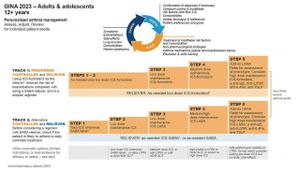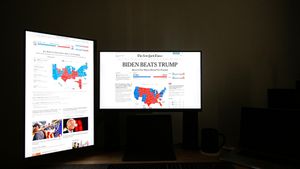Seattle-Tacoma International Airport witnessed a concerning incident Wednesday when a Japan Airlines plane collided with a parked Delta Air Lines aircraft. The ground collision occurred shortly after 10:15 a.m. local time, raising alarms just weeks after another tragic aviation event involving passenger planes.
According to reports from the Seattle-Tacoma International Airport (SEA), the incident took place on the taxi line between the S Concourse and the south airport maintenance hangars. A Japan Airlines aircraft, identified as flight 68, was taxing when it struck the tail of Delta Air Lines flight 1921, which was stationary at the time. Fortunately, officials reported no injuries among the passengers.
"All passengers from [the] incident involving Japan Airlines flight 68 & Delta Air Lines flight 1921 have been deplaned [with] no reported injuries," SEA stated on its social media platform. Following the collision, the airport coordinated with both airlines to swiftly deplane passengers and safely transport them to the terminal.
This incident bears heavy significance as it follows closely on the heels of another disaster, where 67 lives were lost due to the midair collision of a passenger plane and Army Black Hawk helicopter near Washington, D.C. Following this earlier tragedy, the aviation community has been on high alert, heightening the scrutiny around ground and midair safety practices.
Officials also reported minimal disruption to airport operations as the accident occurred on the taxiway rather than the runway. "There is minimal impact to airport operations as this occurred on a taxi lane," the airport reiterated. With all safety protocols on high alert, the SEA is encouraging travelers to check with their respective airlines for updates and information.
Recently, operational challenges faced by airlines have also included instances of diverted flights and onboard emergencies. Just this week, Delta Flight 2090, which was carrying 158 passengers from JFK to Orlando, had to be diverted to Raleigh due to an unexplained odor inside the cabin; fortunately, there were no injuries reported. Similarly, passengers and crew on United Airlines Flight 1382 had to evacuate after reports of engine issues during takeoff from George Bush Intercontinental Airport.
The sequence of incidents has led to growing scrutiny of aviation safety, prompting discussions among aviation authorities like the Federal Aviation Administration (FAA) about necessary reforms to reduce the risk of such occurrences and protect passenger safety. The FAA has emphasized the need for enhanced safety measures, especially following the recent spikes of incidents involving planes.
With each recent event, including ground collisions and midair threats, the conversation on aviation safety deepens. Airlines and airport operations are urged to examine their protocols and optimize their systems to prevent future incidents.
While the investigation remains active, the swift response from the Port of Seattle Fire, police, and airport officials has confirmed their commitment to passenger safety. The authority’s ability to manage these types of incidents will be pivotal as air travel continues to see fluctuators amid increasing passenger numbers.
Given these developments, all travelers are advised to stay informed and updated on their flights, as the dynamics of aviation continue to evolve. Safety has become the cornerstone of air travel, and measures enacted today could affect how aircraft operate on the ground and midair for years to come.



